In addition to loving miles & points, I’m also a huge avgeek. When I fly, I want to know everything about the plane I’m traveling on. Not because I’m scared, but because some planes have really interesting histories. It’s amazing how many airlines some aircraft have flown for over the years.
For those who are curious about the age of planes, I figure it’s fun to share how I go about determining the age of the planes I’m flying on.
How to determine the age of a plane by looking at it
Say you’re at the departure gate for your flight, and the aircraft is there. How can you tell how old it is? The key is to figure out the aircraft’s registration code, which is typically a five to six digit code (in some countries it has just letters, while in other countries it can have numbers too).
The full registration code of an aircraft can typically be found toward the back of the fuselage. For aircraft registered in the United States, this will always start with the letter “N.” For example, take the below American Airlines aircraft — if you look closely, you’ll see that the registration code is N835NN.
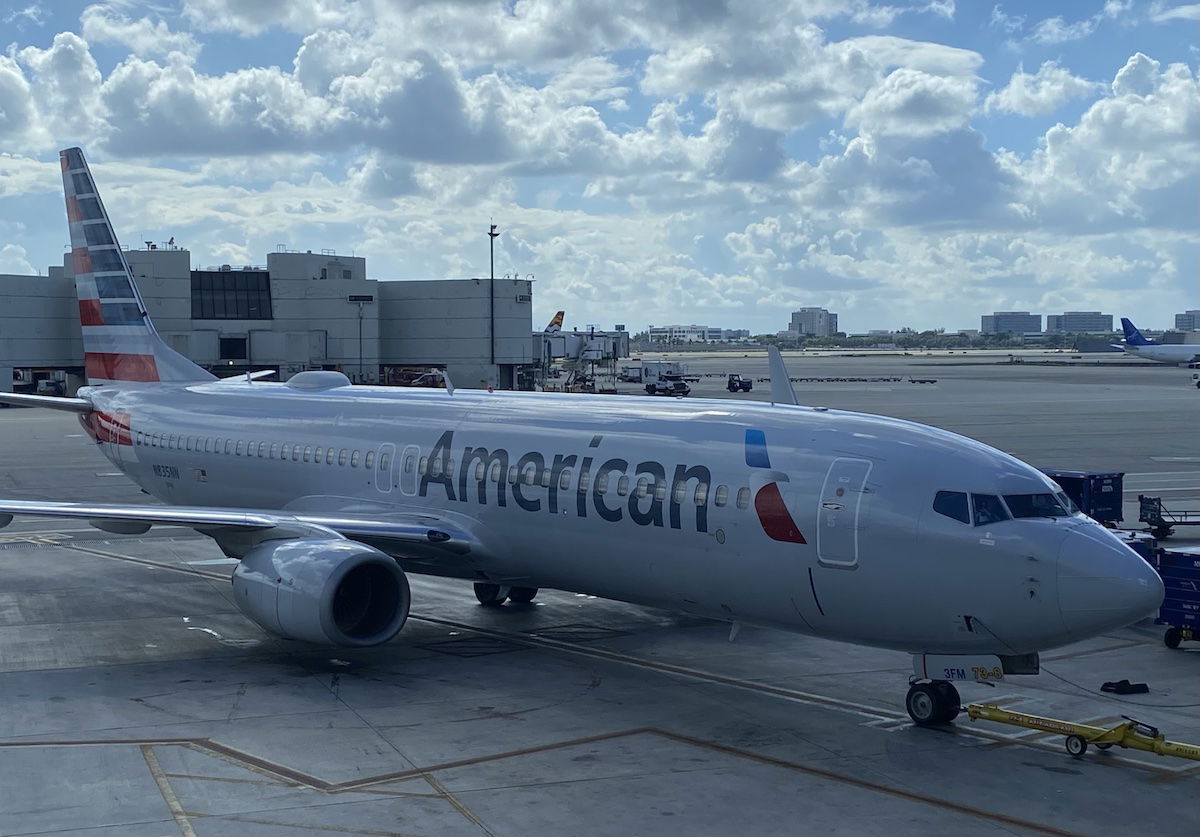
Once I have that information, I’d recommend Googling “[aircraft registration code] Airfleets” or “[aircraft registration code] Planespotters” with airfleets.com and planespotters.net being two awesome websites that track aircraft details. Here’s the page you’ll get if searching with airfleets.com — as you can see, this is a roughly 15 year old Boeing 737-800.
If you can’t easily see the registration code (because it’s at the back of the aircraft), sometimes there’s a clue closer to the nose. For example, take the below American Eagle aircraft. As you can see, it has the registration code N755SK. You’ll also see “755” written just below the cockpit window, so that’s a further clue. This plane is a roughly 20 year old SkyWest CRJ-700.
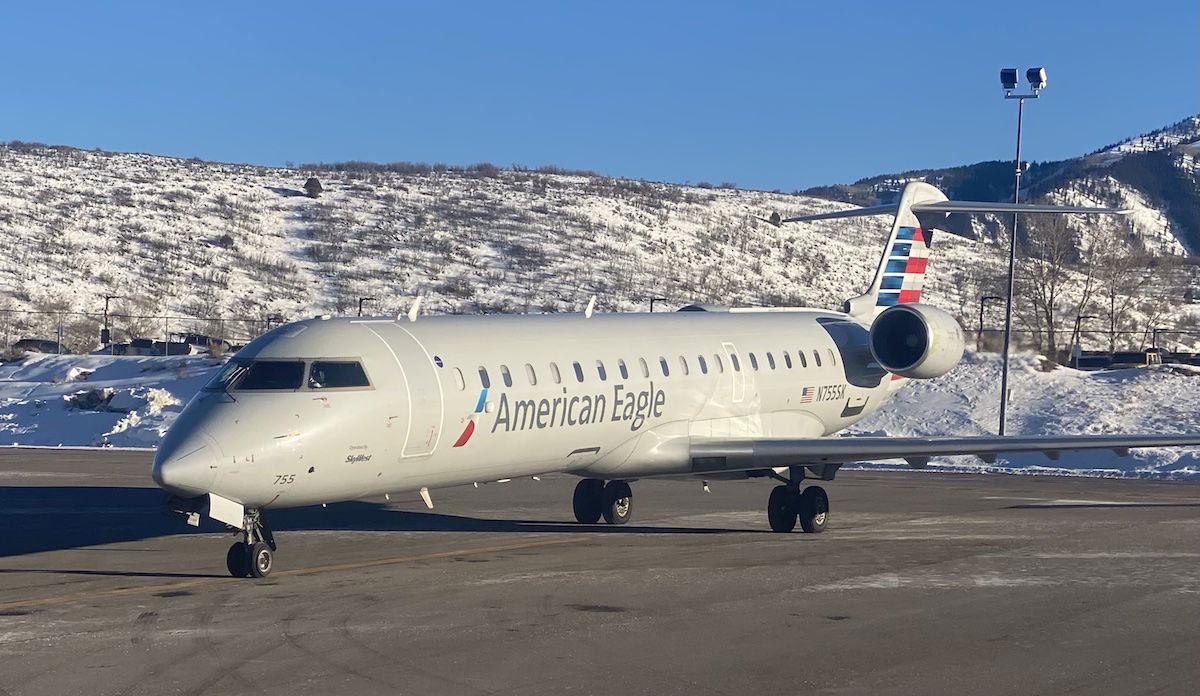
Sometimes there’s also a clue on the panel immediately above the forward wheels. For example, take the below JetBlue aircraft, which has the registration code N2016J. If you can’t quite make that out at the back of the aircraft, you’ll see “2016” written just above the forward wheel. Again, “N” is how all aircraft registrations in the United States start, and in this case “J” is always the last letter for JetBlue aircraft registrations. This plane is a roughly six year old JetBlue Airbus A321neo.
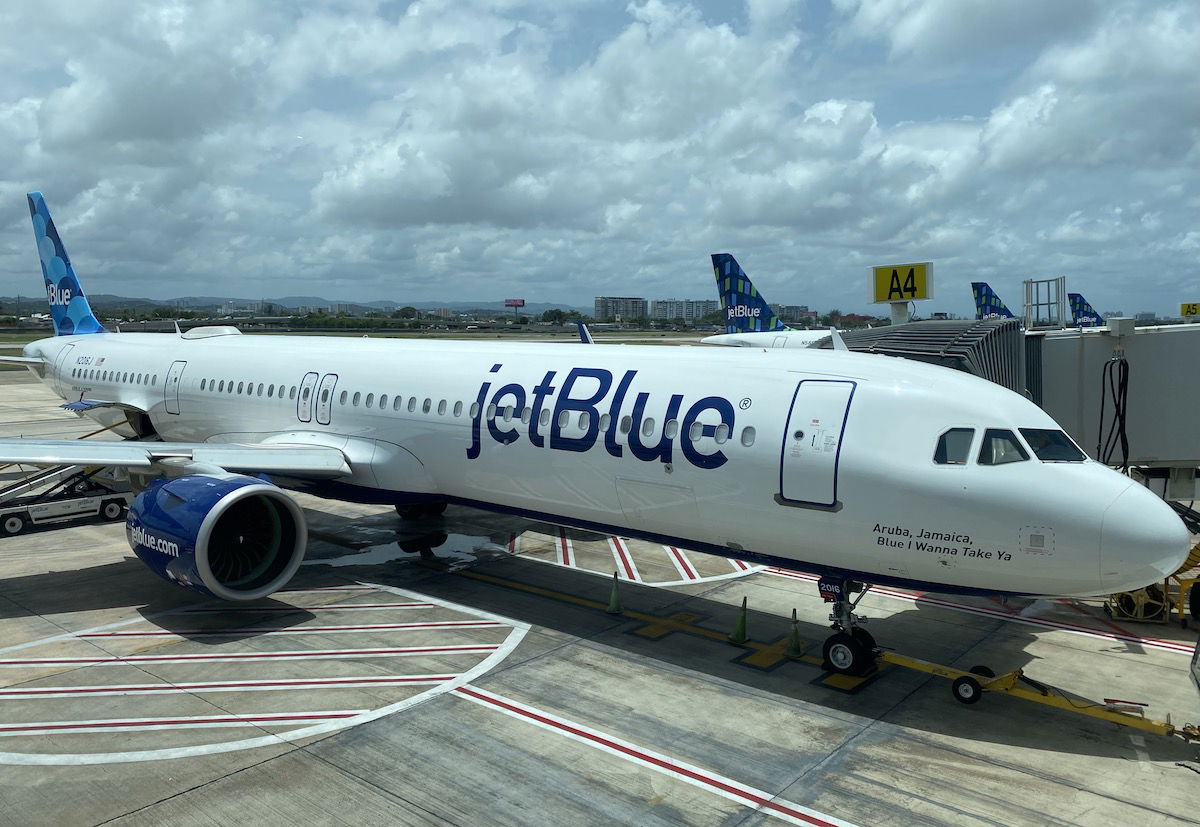
Just to give an example of a non-US registered plane, take the below Lufthansa aircraft, with the registration code D-ABYR (all planes registered in Germany start with “D”). This plane is a roughly 11 year old Boeing 747-8.
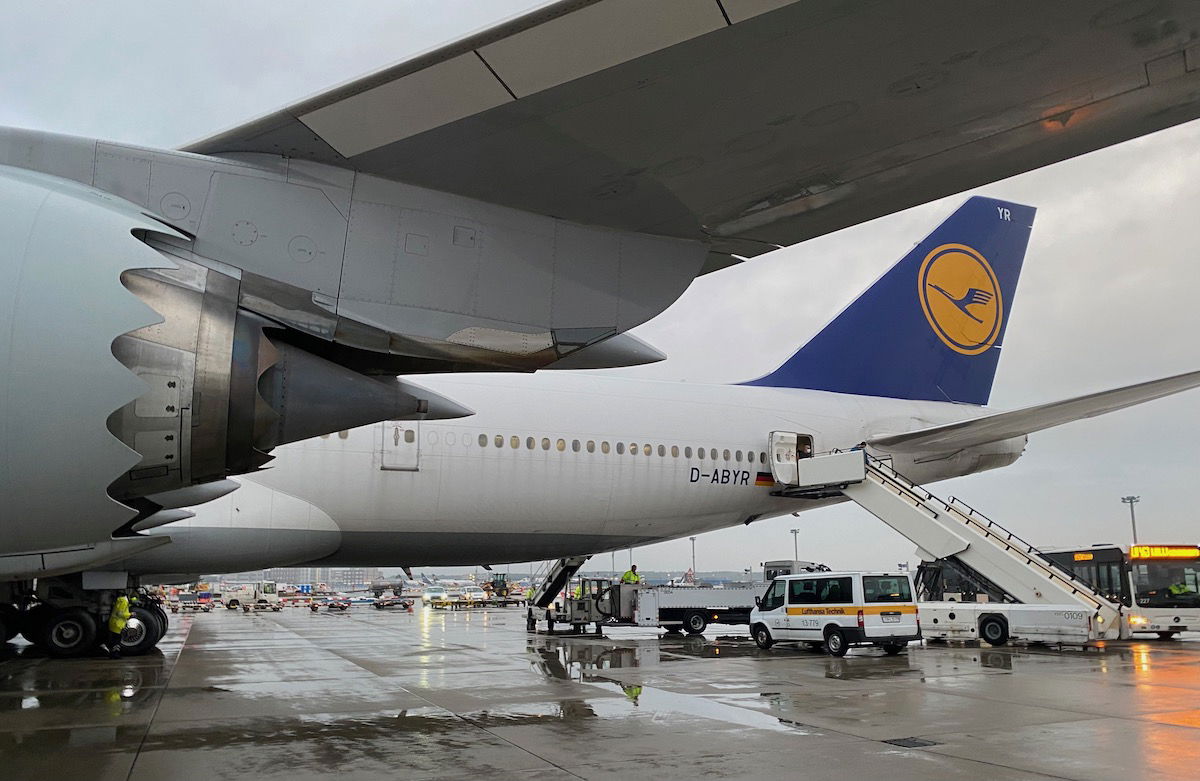
If you’re at a gate it’s not always possible to see the registration code, though, especially if the jet bridge is blocking it. Below is a picture I took of a Lufthansa 747-8 at Chicago O’Hare. Above the forward wheel I saw it said “YD.” Since registration codes are often sequential, I could assume that the registration code was D-ABYD (since all Lufthansa 747-8s start with “D-AB”).
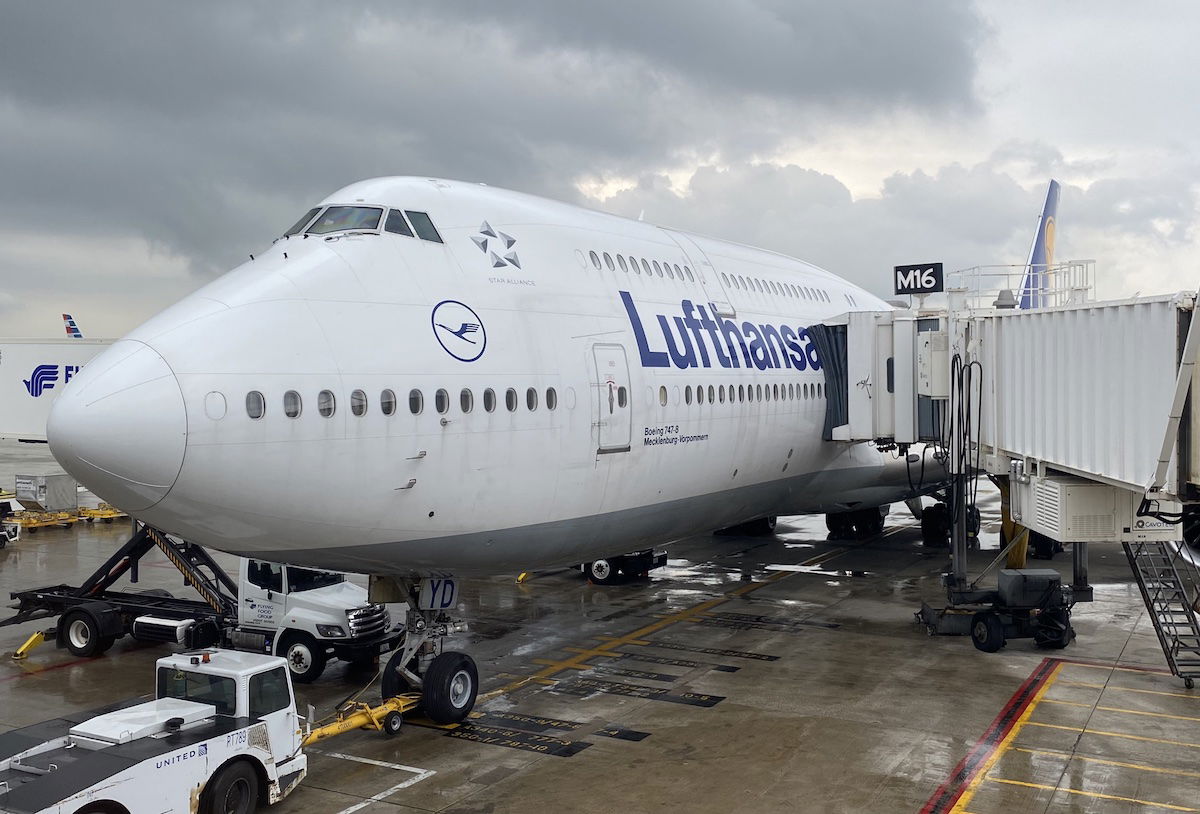
How to determine the age of a plane without looking at it
How do you determine in advance which aircraft is scheduled to operate your flight? While you can’t tell way in advance, you usually can tell day of departure by determining the registration code. How do you figure that out? It’s a two step process.
This will only work if you’re searching close to departure, since airlines typically don’t assign tail numbers until fairly close to departure, and that’s always subject to change anyway until the plane leaves.
Let’s say you’re flying later today from New York to London on American Airlines flight AA100. The easiest thing to do is to just Google “[flight number] Flightradar24.” So in this case I Googled “AA100 Flightradar24.” That should bring you to this page. There you’ll find the registration codes listed for the next two AA100 flights, with one departing today and one departing tomorrow. As you can see, for August 9 it’s expected that N732AN will operate that flight.

If you’re a paid Flightradar24 subscriber, then you can just click the registration code and you’ll see that this is a roughly 10 year old plane.

If you’re not a paid subscriber, you can then Google “[aircraft registration code] Airfleets,” as I recommended earlier. In this case I’d search N732AN, which would bring you to this page.
Why plane age doesn’t actually matter
As I mentioned at the start of this post, I like to keep an eye on this stuff because I’m an avgeek and I genuinely find it to be interesting.
To those who are concerned about the age of a plane, I just want to emphasize that age is just a number, and has very little impact on safety. There are a lot of other factors to consider, from the number of cycles, to maintenance practices, to pilot training, etc. Personally I think people just shouldn’t worry about airline safety, but if you are concerned, age of aircraft isn’t what you should be focused on.
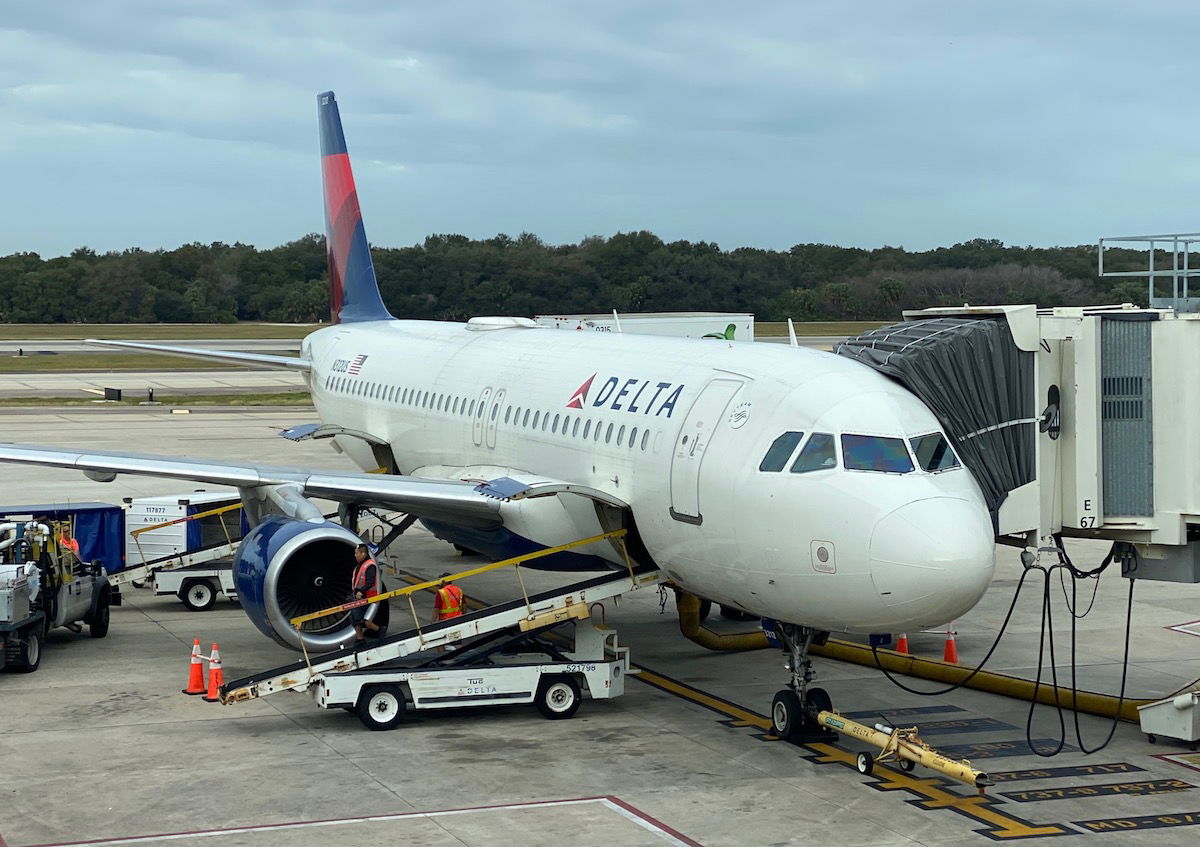
There are planes with interesting histories
Admittedly the aircraft I’ve used in the above examples don’t have especially exciting histories, as they’re mostly from airlines that are known for buying new aircraft. However, at times aircraft histories can get very interesting. Let me give a couple of examples.
Belarusian national carrier Belavia recently smuggled a few Airbus A330-200s into the country. One of those has the registration code EW-588PD, and that plane has been flying for around 23 years, with quite the history.

If you want to take a look at an extreme example, there’s the Nolinor Boeing 737-200 that’s still in service with the registration code C-GNLK. The plane has been flying for over 51 years, and has flown for everything from Transavia, to Saudia, to Aerolineas Argentinas, to Air Florida. The things that plane must’ve seen!
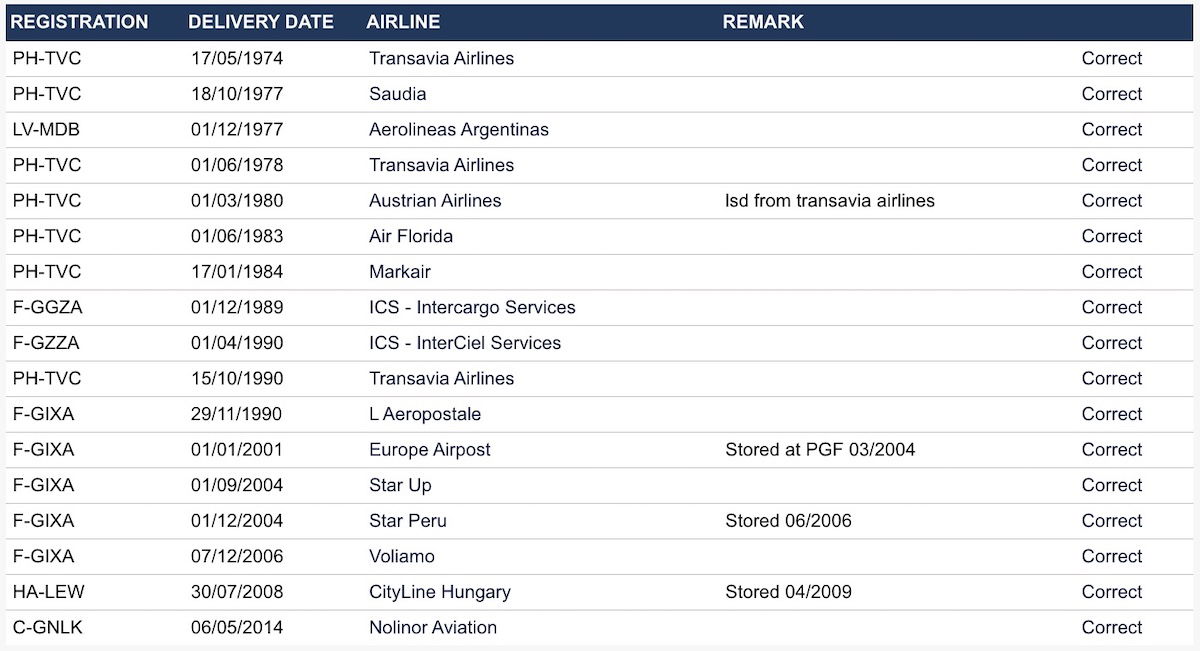
Bottom line
It’s not too hard to tell the age of the airplane you’re flying on. The trick is to figure out the registration code of the airplane, and then go to airfleets.com to look up when it was produced. It can also be fun to see if the plane has flown for any other airlines in the past, as some planes have pretty global histories.
I just want to once again emphasize that aircraft age as such shouldn’t matter. If you’re a nervous flyer, don’t assume that a new plane is safe and that an old plane is dangerous. While we’re talking about avgeeky things, here’s a post about how to tell airplanes apart.
Anyone else enjoy looking up the age and history of planes they’re flying on?







